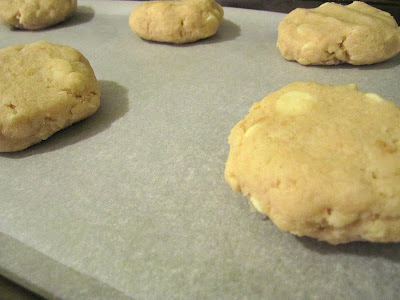I know what you are thinking, "Brenna, what is the world is a Galette?".
Well let me tell you, that is a great question!
Galette vs. Pie-- a Galette has one crust, leaving the center uncovered and requires no pie plate. This offers a more rustic looking dessert and makes the preparation process 'easier than pie'. On the other hand, pie has 2 crusts and is placed into a pie plate.
 |
| Apple Galette |
 |
| Granny Smith apples before they have been cooked down. |
 |
| Cooked down apples with butter, sugar, cinnamon and nutmeg. |
 |
| Lay the apples in an even spiral layer, leaving a 1" border. |
 |
| Overlap the pie crust to make the unique form of a Galette. |
 |
| The finished product, brushed with the optional apricot jelly. |
Apple Galette
Author: Brenna
Makes: 1 Galette, 6-8 servings
Ingredients:
1 pie crust.
flour (for dusting)
3 large Cooking apples*, peeled and thinly sliced
2 Tablespoons butter
1 teaspoon fresh lemon juice
1/8 cup brown sugar
1/8 cup white sugar
1 teaspoon cinnamon
¼ teaspoon freshly ground nutmeg
1 Tablespoon apricot jelly (*optional)
Directions:
Preheat oven to 400 degrees F.
Line a baking sheet with parchment paper.
On a flat surface, sprinkle with a light dusting of flour (this will keep the pie crust from sticking on the counter). Roll out to an 10” circle. Place on the prepared baking sheet.
In a medium sauce pot melt the butter. Add in the sliced apples and lemon juice and cook on med-low heat until slightly tender with the lid on (to create steam); about 8-10 minutes. Remove from the heat and toss in brown sugar, white sugar, cinnamon, and nutmeg: lightly tossing to evenly coat the apples. Let the mixture cool (Tip 1). Evenly arrange the apple mixture in a spiral on the surface of the pie crust leaving a 1” border. Fold over the edges of the pie crust over the apple mixture, fluting the edges (Tip 2).
Bake for 20-25 minutes.
Optional step for a shiny crust (as in the picture shown)--Once baked, remove from oven and brush with the apricot jelly (may need to be zapped in the microwave to heat it up). Replace in the oven for 5 more minutes to allow the pie crust to brown.
Serve hot and with French Vanilla Ice Cream!
Tip 1: Pie crust has a high content of butter/fat which needs to be chilled for proper baking. Therefore if you place a hot apple mixture onto the crust, it will melt the butter causing the pie crust to tear.
Tip 2: Galette vs. Pie-- a Galette has one crust, leaving the center uncovered and requires no pie plate. This offers a more rustic looking dessert and makes the preparation process 'easier than pie'. On the other hand, pie has 2 crusts and is placed into a pie plate.
*Cooking apples are dense, crisp, and flavorful- Granny Smith, Honey Crisp, Gala
Variation: Replace one apple with ¼ cup fresh berries (blackberry, raspberry, or fresh cranberries…) to the mixture.
Don’t bake ahead: Once baking this dessert, you may let it sit up to four hours but I do not advise any longer. The texture of the crust will change over time and not result in the crisp flakey crust that is preferred.















